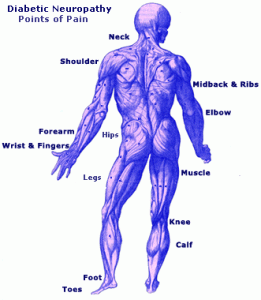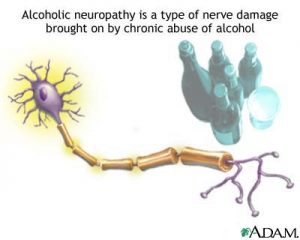What Causes Diabetic Foot Swelling?
Swelling of the ankles and feet as a result of fluid retention in the tissues is commonly called edema. Accumulation of fluid generalized or localized to a particular part of the body. Swelling commonly occurs after sitting in one position for long, after eating salty food or as a result of hormonal changes. However, swelling can also be caused by other conditions.
Edema (swelling in the ankles and feet) can also be caused by diabetes. Diabetic foot swelling is usually caused by diabetes-related factors, such as:
- Poor circulation
- Kidney problems
- Heart problems
- Obesity
- Venous insufficiency
- Side effects of medication
Diabetes and Swelling
If the body is unable to utilize insulin properly, glucose can accumulate in the blood. High level of blood glucose can damage the delicate lining of small blood vessels and this damage can hamper blood circulation.
Is Feet Swelling a sign of Poor circulation?
Poor blood circulation results in fluids getting trapped in some parts of the body, such as the feet, ankles, and legs.
For people with diabetes, healing tends to be slower and swelling can occur after an ankle or foot injury. Over time, high levels of blood sugar can damage nerves in various parts of the body, such as the lower extremities.
This can cause numbness, making it hard to detect injuries such as cuts, sprains, and fractures.
If left untreated, sprains and fractures can cause swelling in the affected area. Additionally, if untreated wounds become infected, swelling can occur.
Speak to your physician about the swelling you are experiencing, because sometimes swelling can be symptom of other underlying problems such as liver, kidney, or heart disease. It is also very important for people with diabetes to check their feet regularly for injuries such as cuts and bruises. Visit your doctor periodically to check for nerve damage or circulation problems especially in the lower extremities.
Top 5 tips for Managing Diabetes Foot Swelling
1.Lose weight
Healthy weight loss can also help reduce swelling in the lower extremities. Maintaining a healthy weight brings about numerous health benefits including lower risk of heart disease, less joint pain and it will be easier to regulate your blood sugar levels. Maintaining your blood sugar level within the target range reduces the risk of diabetes-related complications such as damage to blood levels, swelling and poor circulation.
2.Wear compression socks
Using compression socks helps maintain uniform pressure on your legs and feet. Maintaining the right amount of pressure in the lower extremities can help improve circulation and reduce swelling.
Compression socks are readily available in most pharmacies, grocery stores, and medical supply stores. They are available in various levels including heavy, medium, and light. Your doctor can help you determine the level you should purchase. However, socks should not be placed over sores or open wounds.
3. Keep your feet elevated
Elevating your feet above the heart level can help reduce the retention of fluid in the lower extremities. It prevents fluid from collecting in the feet by helping it return towards the upper body. You can easily elevate your feet why lying in bed or sitting on the couch. Use a stack of books to keep your legs propped, pillows, or a foot elevation pillow.
4. Exercise regularly

5. Stay hydrated
Drinking more water when the body retains fluid seems counterproductive. However, when you take in more fluids, you’ll expel even more fluid through urination. Moreover, the body retains water when it’s dehydrated. Drink at least 8 glasses of water per day to reduce swelling.
Before increasing your water/fluid intake, consult your doctor to determine if this is the right thing for your specific condition. Sometimes, if the swelling is due to liver problems or heart problems, doctors may advise you against increasing your fluid intake.
A high salt intake can worsen swelling. Instead of salt, use herbs such as oregano, rosemary, garlic powder, thyme and paprika. People with diabetes may need to limit their salt intake. Consult your doctor to see the amount of salt you should eat per day. You can cut back by eating more vegetables and fruits. Avoid purchasing processed foods; instead, look for low-sodium foods.
Nerve Damage in Diabetics
Nerve damage occurs when excessively high glucose levels for extended periods of time damage the nerves, especially the nerves of the lower extremities. When these nerves are damaged it is called peripheral neuropathy and can be characterized by pain and or numbness in the feet.
This numbness can be a contributing factor to wounds and sores on the feet as the decreased sensation causes the diabetic to not be able to sense damage to the foot. The decreased sensation can also cause the diabetic to not be able to support themselves as they normally would and this can lead to falls and injuries to the feet ankles and knees.
When the blood vessels of the lower extremities are blocked and circulation decreases it can cause damage at the cellular level as the cells are unable to receive oxygen and nutrients from the blood. All of these symptoms are made worse by the fact that slow healing is also a sign of diabetes and infections are common.
Diabetes foot swelling, nerve damage, and other problems can lead to a greatly decreased quality of life, and the key to heading off the worst effects is appropriate glucose control.
Check out our Top 4 diabetic lotions to increase circulation HERE!





 e Expectancy of Cats with Diabetes
e Expectancy of Cats with Diabetes


 In some types of neuropathy, where the cause is known, neuropathy cures and treatments are aimed squarely at treating whatever is causing the disease. In most cases, when the cause can be determined and mitigated the neuropathy will resolve and cease to be a problem.
In some types of neuropathy, where the cause is known, neuropathy cures and treatments are aimed squarely at treating whatever is causing the disease. In most cases, when the cause can be determined and mitigated the neuropathy will resolve and cease to be a problem.